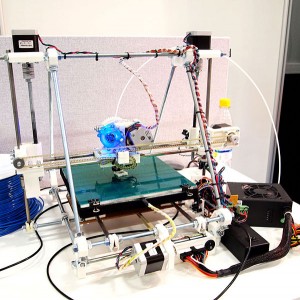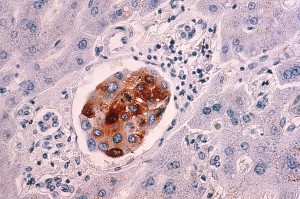Over the past few years, hype over 3-D printing has continued to grow. With each new revelation comes increased anticipation of the industry’s potential, now including even the biomedical field. The media reports of printers designed to create almost unbelievable possibilities from live tissues, bone substitutes, to the potential of organs. However, how reputable are these claims? How is this technology even possible? Well to start, simply by changing the ink.
The “Ink” is Alive
Genuine cells have been printed and successfully cultured into tissues through the use of “bio-ink”. This ink contains live cells in a formulation of matrix molecules. During printing, the cells are layered upon each other in an additive procedure, eventually resulting in a 3-D structure. Why bother “printing” out the cells? The appeal of 3-D printers is in the efficiency. They save countless hours of manual labour normally needed to layer a simple tissue, let alone an organ.
Beyond In-Vitro
The BioPen goes beyond the standard of printing tissues onto slides. The handheld printer literally “draws” a framework onto damaged or missing pieces of bone. Initially, the pen deposits modified ink, a gel made from biopolymers and live cells, onto the targeted area. The notion is that by combining this with regenerative stem cell therapy, the polymers will eventually degrade and be replaced by new tissue. The BioPen would allow surgeons to deliver cells instantly and accurately as a temporary substitute.
Below is a short clip showing the pen in action, courtesy of the Australian Research Council of Excellence for Electromaterials Science (ACES).
Tailor Made Organs?
3-D printing has large implications for the future of regenerative medicine, even if we are not quite there yet. This technology would reduce the demand for organ and tissue transplants, notorious for their long wait lists. Though it’s not near ready for clinical use, the bio-printing company Organovo claims that they will unveil the first 3-D printed liver by the end of 2014.
The Hope
3-D printing continues to rapidly evolve as it becomes more readily available in many fields. The 3-D biomedical industry is still in its initial stages, as researchers will have to overcome barriers to make it more efficient and economically feasible. Regardless, presentations have already demonstrated its viability, from the printing of live tissues to the BioPen’s application into orthopedic surgery. Ultimately, the potential of 3-D printing is likely to have large further implications for not only the medical industry, but society in general.
-Richelle Eger
References
“BioPen to Rewrite Orthopaedic Implants Surgery.” University of Wollongong. N.d. Web. 19 Jan. 2014.
Fraunhofer-Gesellschaft. “Need different types of tissue? Just print them.” ScienceDaily, 24 Oct. 2013. Web. 19 Jan. 2014.
Institute of Physics. “3-D tissue printing: Cells from the eye inkjet-printed for the first time.” ScienceDaily, 18 Dec. 2013. Web. 19 Jan. 2014.
Mearian, Lucas. “The First 3D Printed Organ – a Liver – Is Expected in 2014.” Computerworld. 26 Dec. 2013. Web. 19 Jan. 2014.



